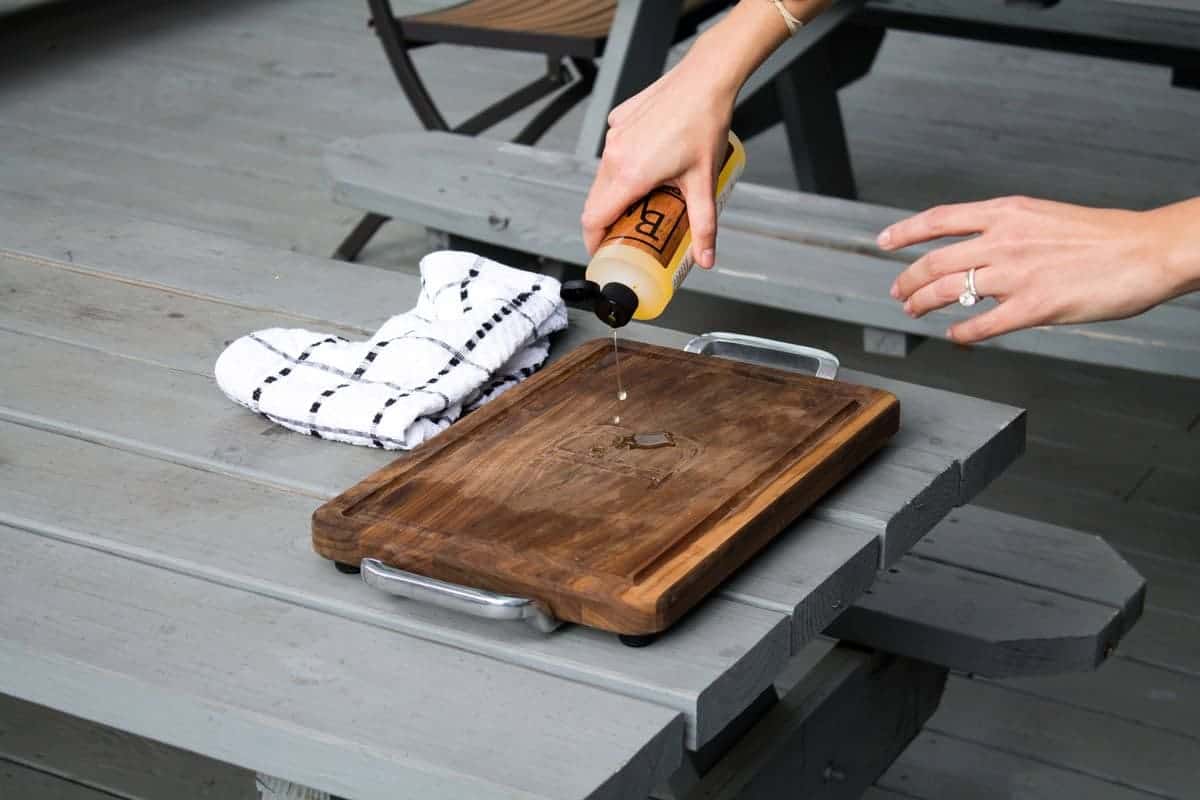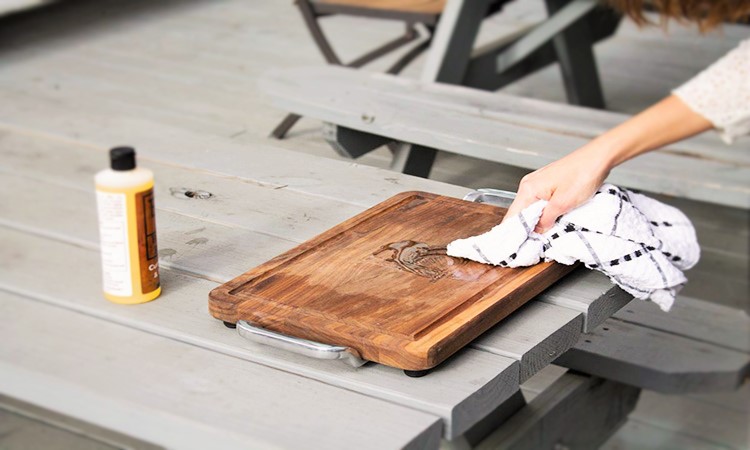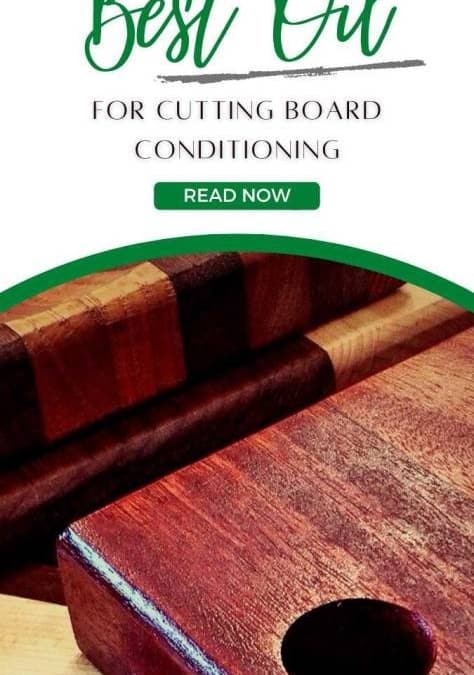Vegan Globetrotter is supported by our audience. When you purchase through one of our links, we may earn a small affiliate commission. As an Amazon Associate I earn from qualifying purchases. Your cost is not affected.
==================
Cutting boards are essential in every kitchen, whether you are a professional caterer or enjoy cooking at home. But over time, cutting boards can get worn and broken, making them less safe and spreading germs. It would help to keep your cutting board in good shape by oiling it to prevent this. This article will discuss the best oil for conditioning cutting boards. You will also know the vegan options made from vegan plants and safe to use with food.
Types of Oil to Use for Cutting Board Conditioning
Consider several things when choosing the best oil for conditioning a cutting board, especially if you’re looking for cutting board oils. The type of timber the board usually uses is the user’s preference. The best oils for conditioning a chopping board are those derived from plants. These are the following:

• Coconut Oil
Cutting boards enjoy coconut oil. It is a versatile vegan oil that inhibits bacteria on your cutting board. Meat-cutting boards are more likely to house harmful bacteria, which is crucial.
Coconut oil has high rancidity resistance and antimicrobial qualities. Because coconut oil is thick, it resists oxidation.
Coconut oil‘s sweet smell can also scent your cutting board. It is without overpowering the food’s natural scent. Most grocery shops carry it, and it’s cheap.
To condition, a clean, dry cutting board, apply a thin layer of coconut oil with a cloth or paper towel. After several hours or overnight, wipe off any extra oil. Maintain your cutting board by doing this every few weeks or as needed.
• Walnut Oil
Maple and walnut cutting tools enjoy walnut oil. Deep-penetrating vegan oil nourishes and protects wood fibers. Cooks will love its rich nutty flavor, which enhances food’s natural flavor.
Walnut oil protects wood by drying and hardening when exposed to air. This layer keeps dampness out of the wood, preventing warping and cracking. It also prevents wood contamination by bacteria and other microbes.
• Sunflower Oil
Sunflower oil can improve cutting boards in many ways. It is a great plant-based oil for all wood cutting boards but works best on milder woods like pine and cedar. Sunflower oil is a moderate, neutral, vitamin E-rich oil that preserves wood.
Sunflower oil moisturizes cutting boards and avoids cracking and splitting. Softer woods are more susceptible to moisture and temperature shifts. Sunflower oil does not affect food taste when used for cutting board preparation. Sunflower oil is available in most grocery shops, making it convenient. It’s also cheaper than other oils on this list.
Follow These Easy Steps to Prepare Cutting Boards With Walnut Oil:
1. Using warm soapy water, wash and dry your cutting board.
2. Put a small amount of walnut oil on the board. Use a clean cloth or paper towel.
3. Use a rotating motion to coat the wood with oil.
4. Let the oil soak into the wood for 20–30 minutes.
5. Clean the oil with a towel.
6. Before using, let the cutting board dry. Replace oil that stinks or tastes bad.
This short video demonstrates how to condition your cutting board.
• Flaxseeds Oil
Flaxseed oil is a great wood preservative because of its high omega-3 concentration. Omega-3 fatty acids are good for the heart, so flaxseed oil is secure. Refrigerate flaxseed oil must avoid spoiling.
Avoid using flaxseed oil on cutting boards that come into contact with raw meat or seafood. It has a low smoke point and can degrade at high temperatures. It is also producing hazardous chemicals. Apply flaxseed oil to cutting boards for slicing vegetables, fruits, or bread.
When preparing a wood cutting board with flaxseed oil, you need to apply it in fine layers. It allows it to penetrate the wood fibers. This is ideal for applying flaxseed oil in many layers over several days. It enables each layer to dry before applying the next. The oil penetrates deeper into the wood and creates a barrier. It prevents water and microbes from entering the board’s surface.
• Jojoba Oil
Jojoba oil’s unusual makeup is like the oils found in human skin. It makes it a great choice for conditioning cutting boards. The jojoba plant is the source of this liquid wax. It is endemic to the southwestern United States and northern Mexico.
Jojoba oil’s durability is a major advantage. Jojoba oil does not go rancid or spoil compared to many other oils. Because of its extended shelf life, it is a great option for conditioning cutting boards. Jojoba oil is also suitable for food-contact surfaces. It contains no toxic chemicals.
Jojoba oil‘s neutral taste and aroma are bonuses. They allow it to complement rather than mask the food’s inherent qualities. It is safe to use on softer wood like pine and harder woods like maple or walnut. It won’t leave behind a sticky residue or greasy coating.
Adding jojoba oil can help preserve and nurture the wood fibers. It penetrates the timber to form a protective barrier. It can also remove moisture and bacteria. Maintain your cutting board in pristine condition and extend its useful life.
• Grape Seed Oil
Grape seed oil is a great option for conditioning chopping boards of softer pine or cedar wood. You can enjoy this neutral oil because it lacks discernible taste. Grape seed oil is rich in antioxidants. It can delay the wood’s degradation and even prevent some. Vegan oil is found in most supermarkets and health food shops. It makes a practical choice for those seeking a vegan. It is also an alternative olive oil to condition their cutting boards. Grape seed oil has a lower smoke point than other oils. It may not be appropriate for heating at high temperatures.
• Avocado Oil
Avocado oil is popular for conditioning cutting boards. It is particularly hardwood boards like maple and walnut. Monounsaturated fats aid in maintaining a healthy heart and lower inflammation. Additionally, avocado oil has a high smoke point.
Avocado oil prevents the wood from drying out and splitting by adding moisture. Its dense consistency also aids in forming a protective barrier on the surface. It prevents pathogens from penetrating the wood.
The mild flavor of avocado oil is one of its advantages, as it will not impart a strong flavor to your cuisine. It makes it an excellent material for cutting boards used for various dishes.
Avocado is a vegan oil available in most grocery and health food stores. Choosing a high-quality, cold-pressed avocado oil free of additives and impurities is essential. It can help in conditioning cutting boards.
Types of Oil Not to Use for Cutting Board Conditioning
It would help if you didn’t use certain kinds of oils when caring for a cutting board. These oils can go bad and leave a bad smell on your cutting board, making it unusable for food preparation. Here are some oils you shouldn’t use to oil your cutting board.

• Vegetable Oil
Due to its low cost and accessibility, vegetable oil is a preferred cooking oil. It would help if you didn’t use it to condition your cutting board. It goes rancid fast and leaves a sticky residue. Most vegetable oils contain a combination of various oils. Soybean, maize, canola, and sunflower oils are a few of these. It makes them more susceptible to rancidity.
• Olive Oil
Monounsaturated triglycerides are abundant in olive oil, a heart-healthy oil. It is a staple in Mediterranean cooking. Please do not use it to condition your cutting board because it goes rancid fast and leaves a foul odor. Olive oil’s higher price tag makes it less appealing as a chopping board conditioner than other oils.
• Sesame Oil
Flavorful sesame oil is usually used in Asian cooking. Nonetheless, please do not use it to condition your cutting board. It goes rancid fast and leaves a potent nutty odor. Sesame oil is higher than other oils, making it less cheap for this application.
• Peanut Oil
Asian and African cooking uses oil extracted from peanuts. Please don’t use it to condition your cutting board because it goes rancid fast and leaves a foul odor. The cost of peanut oil makes it less attractive as a cutting board conditioner than other oils.
• Canola Oil
The health benefits of canola oil have led to its adoption as a veggie oil replacement. Yet, it would help if you didn’t use it to condition your cutting board. It goes rancid fast and leaves a sticky residue. Canola oil’s higher price tag makes it less practical for preparation than other oils.
• Butter or Margarine
Butter and margarine are usually used in the kitchen. But do not use this oil to condition a cutting board. Cutting boards contaminated with these dairy-based products can go rancid. It can also develop an unpleasant odor, rendering them unusable.
• Motor Oil or Other Petroleum-Based Products
Never use engine oil or other petroleum-based products, as it should go without saying. If these items come into touch with food, it could be very dangerous for people’s health.
Best Oil for Cutting Board Conditioning – Make the Wise Choice Today!
You can condition your cutting board with several excellent plant-based oils. When searching for the best oil for wooden cutting boards, consider these options: sunflower oil is excellent for softer woods like pine or cedar. Walnut oil lasts a long time and gets deep into wood fibers. Jojoba oil is suitable for any wooden cutting board and has a long shelf life. Avocado oil is rich and heavy, high in monounsaturated fats. It is also excellent for conditioning hardwood cutting boards.
In contrast, the grape seed oil is light, neutral, and antioxidant. It is especially useful for conditioning softer wood cutting boards. Use the correct oil on your cutting board, such as grapeseed oil for cutting board. It can help it last longer and keep it food safe, clean, and safe for food preparation.
We hope you found our guide useful. If you have some tips in cutting board maintenance, please comment below. We appreciate what our readers have to say.
More Interesting Stuff!
Bamboo Cutting Board Is the Worst
What is the Best Cutting Board Size?
How Thick Should Should a Cutting Board Be?
Frequently Asked Questions – Best Oil for Cutting Board Conditioning
What kind of oil is most effective?
Mineral oil intended for human consumption is ideal for this purpose. Because it lacks flavor, smell, and cost, you can use it for cutting the entire surface without worry. Protecting the board from water intrusion and breaking is another benefit.
Can I use olive oil or vegetable oil to season my chopping board?
Oils like olives and vegetables are fine for cooking. It would be best if you didn’t use it to condition a cutting board. Over time, these oils can go bad, which results in a foul odor and flavor. Furthermore, they often leave a sticky film on the board that is hard to remove.
How do I apply mineral oil to my cutting board?
When using mineral oil on a cutting board, step one ensures the surface is clean and dry. Pour the mineral oil onto the board and distribute it across the surface with a clean cloth or paper towel. Allow the oil to penetrate. At least 20 minutes overnight for optimal moisturizing. Use a dry cloth to remove any extra oil from the board before each use.
Can I condition it with beeswax?
Beeswax and mineral oil make a great conditioner for a cutting. It can leave a sticky film on the board if used alone, so be cautious.





Don't miss out
when new recipes and information are added!
Join our newsletter for free recipes,
healthy living inspiration, and special offers
You have Successfully Subscribed!